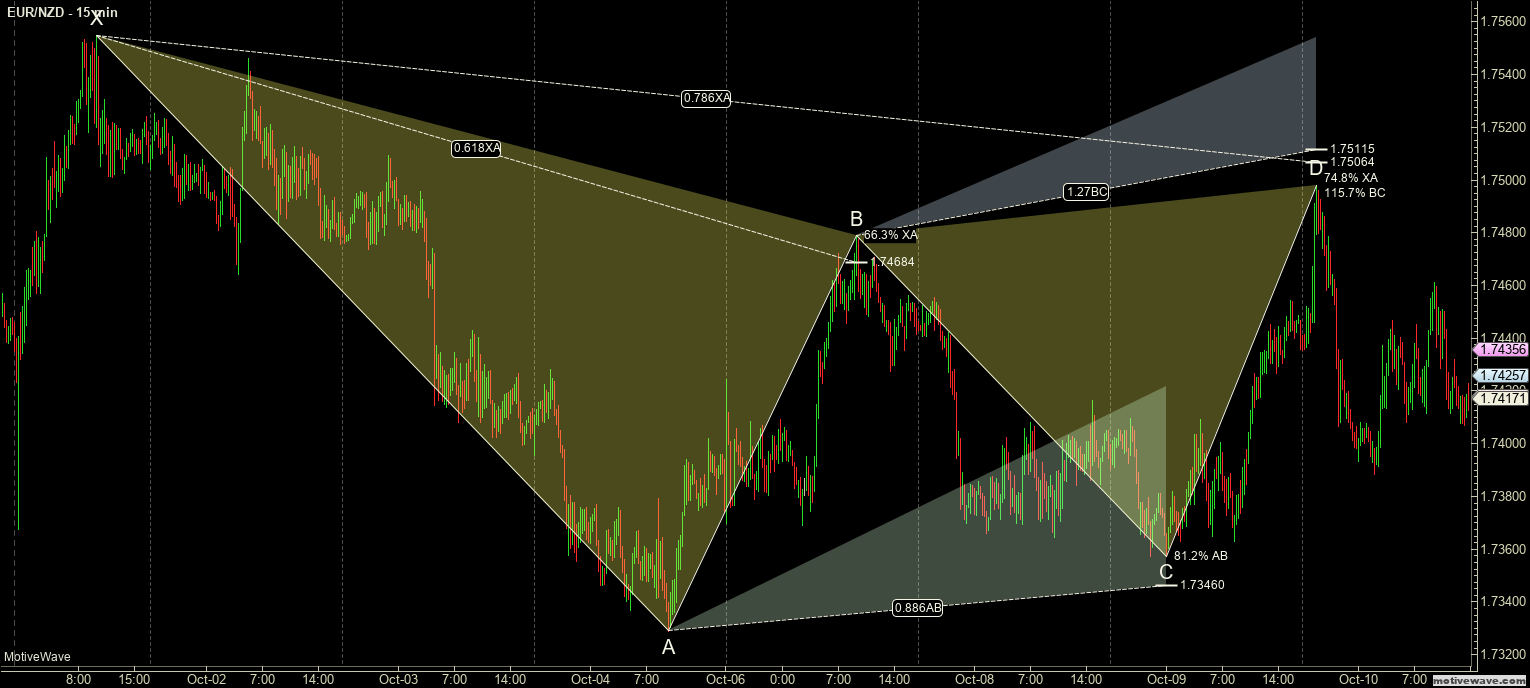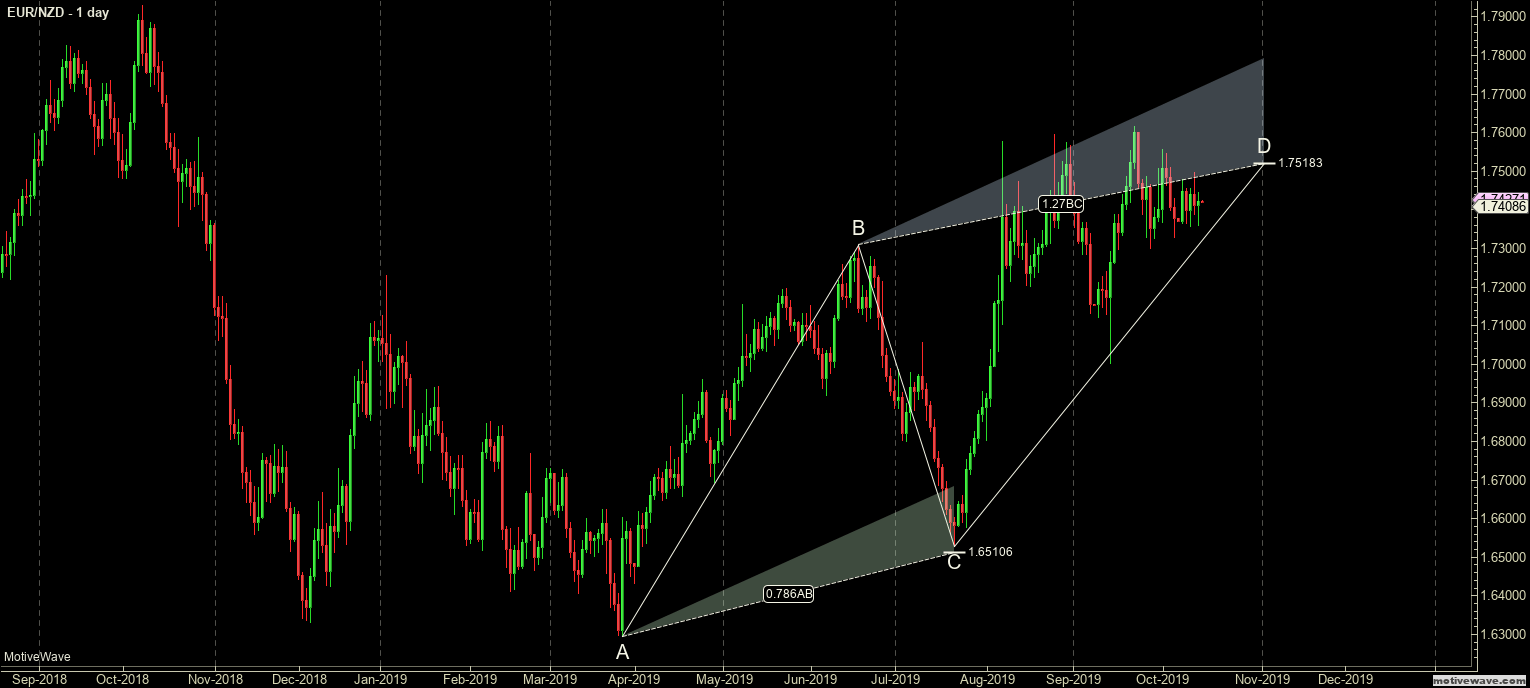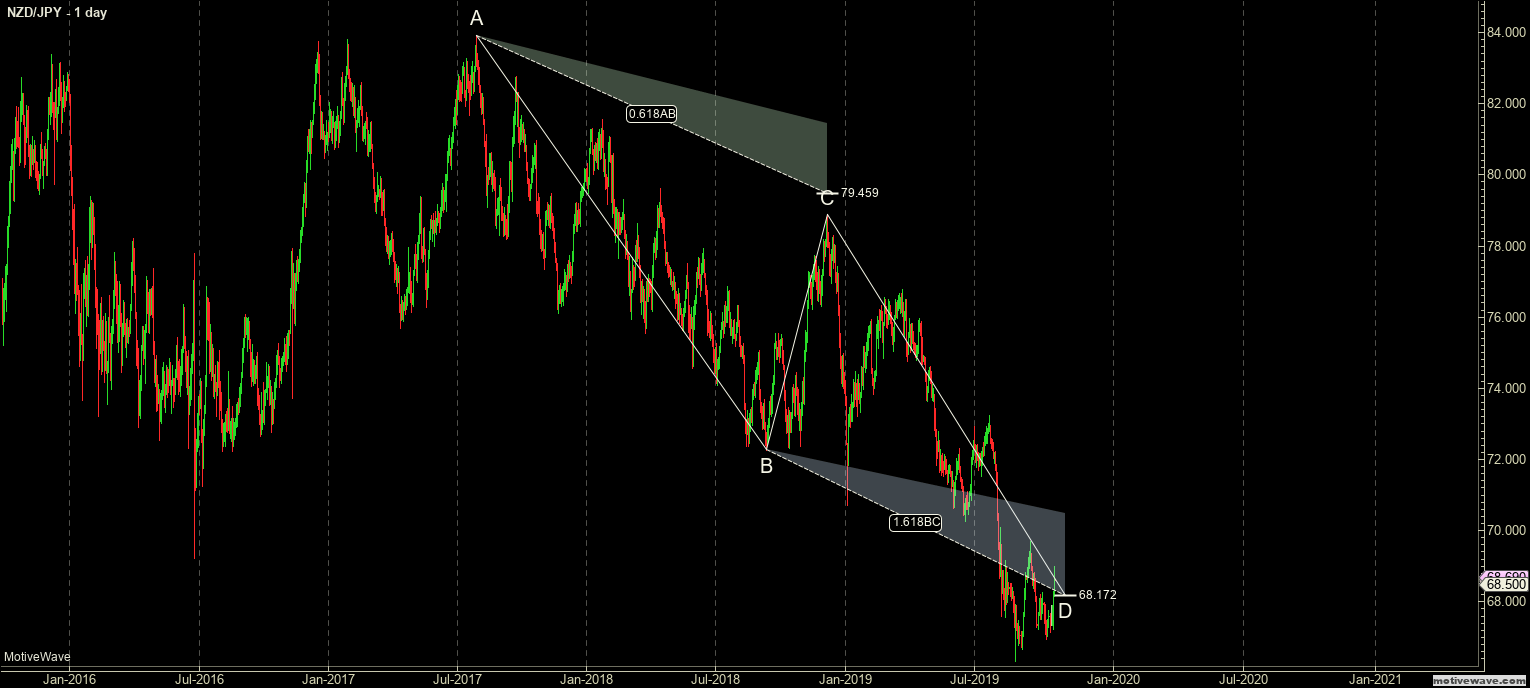The Kijun-Sen Crossover (Crossunder) Strategy is the second in my series over Ichimoku Kinko Hyo. There are two trades setups provided for the long and short side of a market. This strategy also comes from Manesh Patel’s book, Trading with Ichimoku Clouds: The essential guide to Ichimoku Kinko Hyo technical analysis.
Patel called this the day-trading strategy. He warned that this trading strategy has the lowest risk factor out of all of his strategies. The positive expectancy rate is lower, and so being stopped out of trades is a normal consequence of this strategy. He also indicated that the win/loss ratio could be extremely high.
Kijun-Sen Cross Bullish Rules
- Price crosses above the Kijun-Sen.
- Tenkan-Sen greater than the Kijun-Sen.
- If the Tenkan-Sen is less than the Kijun-Sen, then the Tenkan-Sen should be pointing up while the Kijun-Sen is flat.
- Chikou Span in open space.
- Future Senkout Span B is flat or pointing up.
- If Future Senkou Span A is less than Future Senkou Span B, then Future Senkou Span A must be pointing up.
- Price, Tenkan-Sen, Kijun-Sen, and Chikou Span should not be in the Cloud. If they are, it should be a thick cloud.
- Price not far from the Tenkan-Sen or Kijun-Sen
- Optional: Future Cloud is not thick.
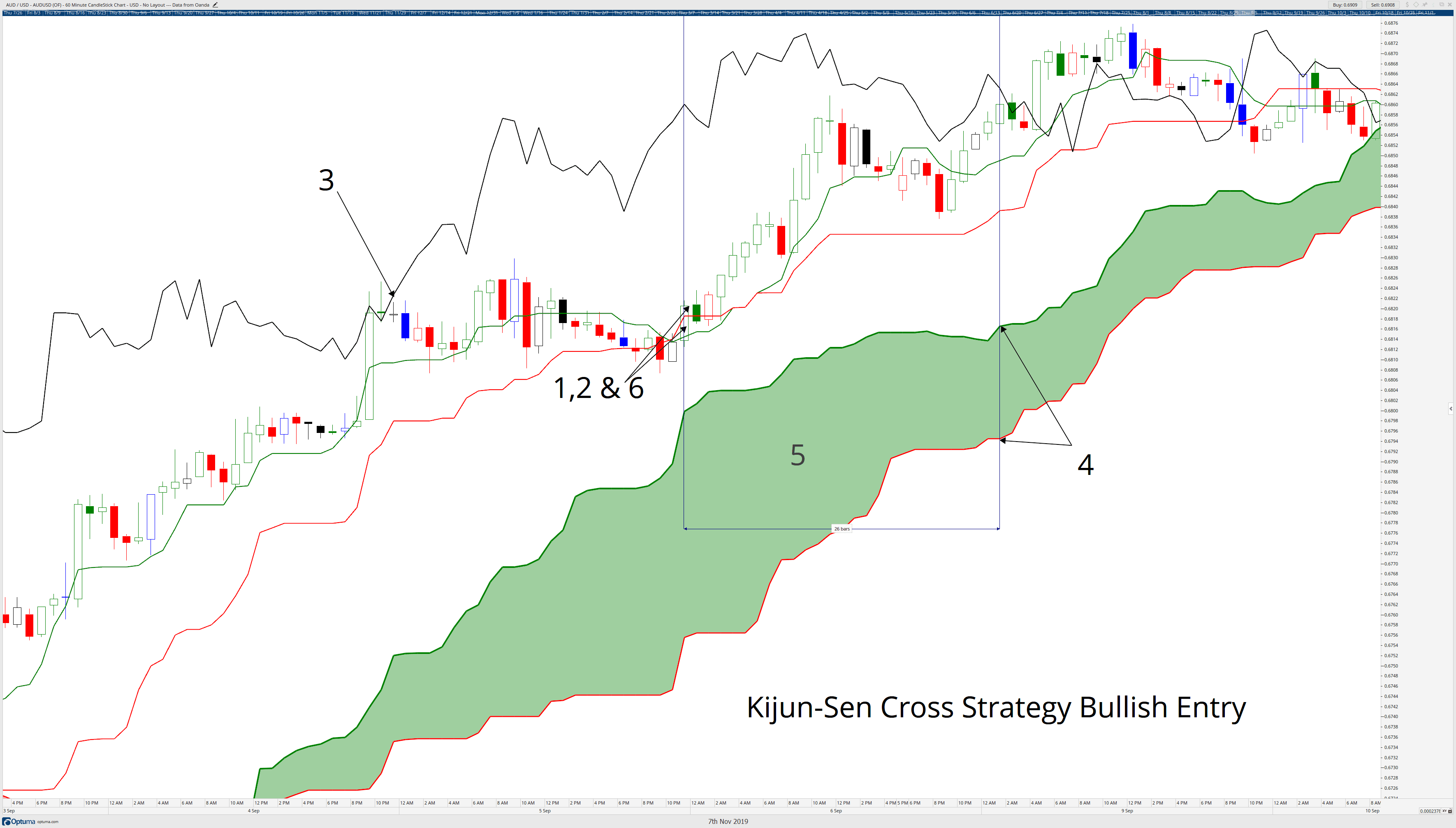
Kijun-Sen Cross Bearish Rules
- Prices cross below the Kijun-Sen.
- Tenkan-Sen less than the Kijun-Sen.
- If the Tenkan-Sen is less than the Kijun-Sen, then the Tenkan-Sen should be pointing up while the Kijun-Sen is flat.
- Chikou Span in open space.
- Future Senkou Span B is flat for pointing down.
- If Future Senkou Span A is greater than Future Senkou Span B, then Future Senkou Span A must be pointing down.
- Price, Tenkan-Sen, Kijun-Sen, and Chikou Span should not be in the Cloud. If they are, it should be a thick Cloud.
- Price not far from the Tenkan-Sen or Kijun-Sen
- Optional: Future Cloud is not thick.
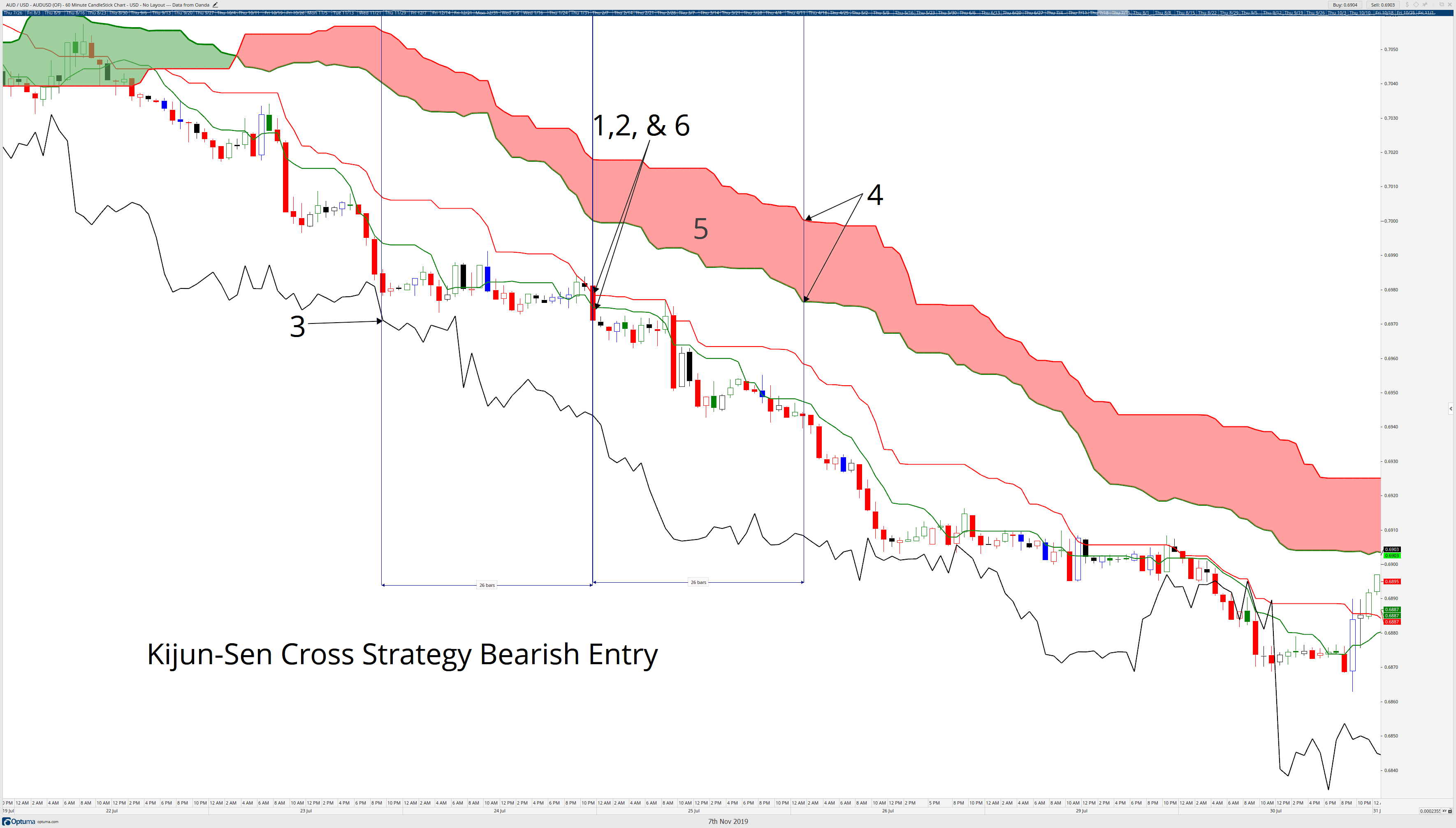
Sources: Péloille Karen. (2017). Trading with Ichimoku: a practical guide to low-risk Ichimoku strategies. Petersfield, Hampshire: Harriman House Ltd.
Patel, M. (2010). Trading with Ichimoku clouds: the essential guide to Ichimoku Kinko Hyo technical analysis. Hoboken, NJ: John Wiley & Sons.
Linton, D. (2010). Cloud charts: trading success with the Ichimoku Technique. London: Updata.
Elliot, N. (2012). Ichimoku charts: an introduction to Ichimoku Kinko Clouds. Petersfield, Hampshire: Harriman House Ltd.

